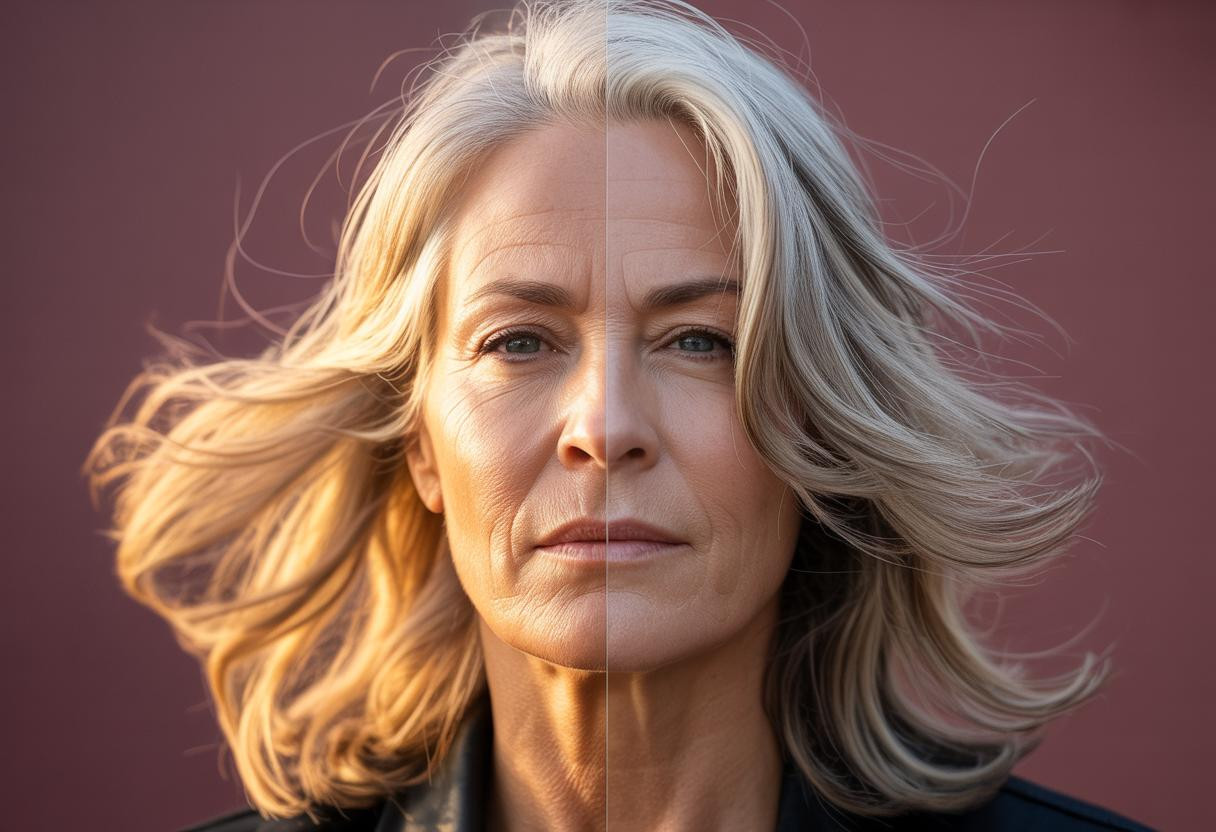At 52, I watched my friend Sarah transform her entire look—not with expensive treatments or drastic cuts, but by finally embracing her silver strands with the right blending technique. Like many women our age, she’d been fighting the gray battle for years, spending hundreds on salon touch-ups every six weeks. Then she discovered color-depositing conditioners, and everything changed.
Why women over 45 are choosing blending over full coverage
The shift from harsh dye jobs to gentle gray-blending reflects a broader cultural awakening. We’re no longer hiding our natural evolution—we’re enhancing it. Color-depositing conditioners like Overtone offer a middle ground that honors both our desire for color and our hair’s changing needs.
These semi-permanent formulas work like a gentle wash of color, depositing pigment without the ammonia or peroxide that can damage mature hair. The result? Natural-looking dimension that grows out gracefully, eliminating those telltale roots that scream “salon overdue.”
The overtone revolution: 30+ shades for every gray pattern
Overtone’s expansion to over 30 shades specifically addresses what traditional hair color couldn’t: the unique challenge of blending with existing gray. Their Espresso Brown and Silver Enhancement formulas don’t fight your natural color—they work with it.
Think of it like watercolor painting over pencil sketches. The gray becomes your base, and the conditioner adds depth and richness without erasing what’s already there. This gentle approach creates movement and dimension that looks effortlessly chic.
Application secrets that prevent amateur mistakes
The biggest mistake I see women make? Treating color-depositing conditioners like regular conditioner. These products require strategy, not just slathering on wet hair in the shower.
- Start with clarifying shampoo to open the hair cuticle
- Apply to towel-dried hair for better pigment absorption
- Use a blow dryer during processing to activate the color
- Always do a strand test first—mature hair can be unpredictable
Why colorists are embracing the DIY gray movement
Surprisingly, many professional colorists support the color-depositing conditioner trend. They see it as maintenance between appointments, not competition. The vegan formulas with coconut oil and shea butter actually improve hair health while adding color.
However, they emphasize realistic expectations. These products excel at toning and blending but won’t dramatically lighten or provide complete gray coverage. Choosing the right shade close to your natural color prevents disappointment.
The cultural shift: from hiding gray to celebrating silver
This movement reflects something deeper than hair trends—it’s about redefining beauty standards for women over 45. The pressure to maintain youthful appearances is giving way to authentic elegance. Gray-blending allows us to age gracefully while still feeling polished and intentional.
European beauty editors have long embraced this philosophy, viewing gray hair as sophisticated rather than something to hide. American women are finally catching up, recognizing that wisdom and experience deserve to be worn proudly.
Seasonal considerations for gray-blending success
Climate affects how color-depositing conditioners perform. Summer humidity can fade colors faster, while winter dryness may require more moisturizing formulas. Adjusting your jewelry to complement your evolving hair color creates a cohesive, sophisticated look.
Real results: what to expect in your first 12 weeks
My client Margaret, 48, started with 40% gray and patchy color from years of box dye. After 12 weeks of bi-weekly Overtone treatments, her hair showed remarkable improvement—not just in color consistency, but in texture and shine.
The key was patience and consistency. Strategic color placement around the face can take years off your appearance when done thoughtfully.
Remember, this journey isn’t about perfection—it’s about embracing a new chapter with confidence and style. Your gray isn’t a flaw to fix; it’s a canvas to enhance.
